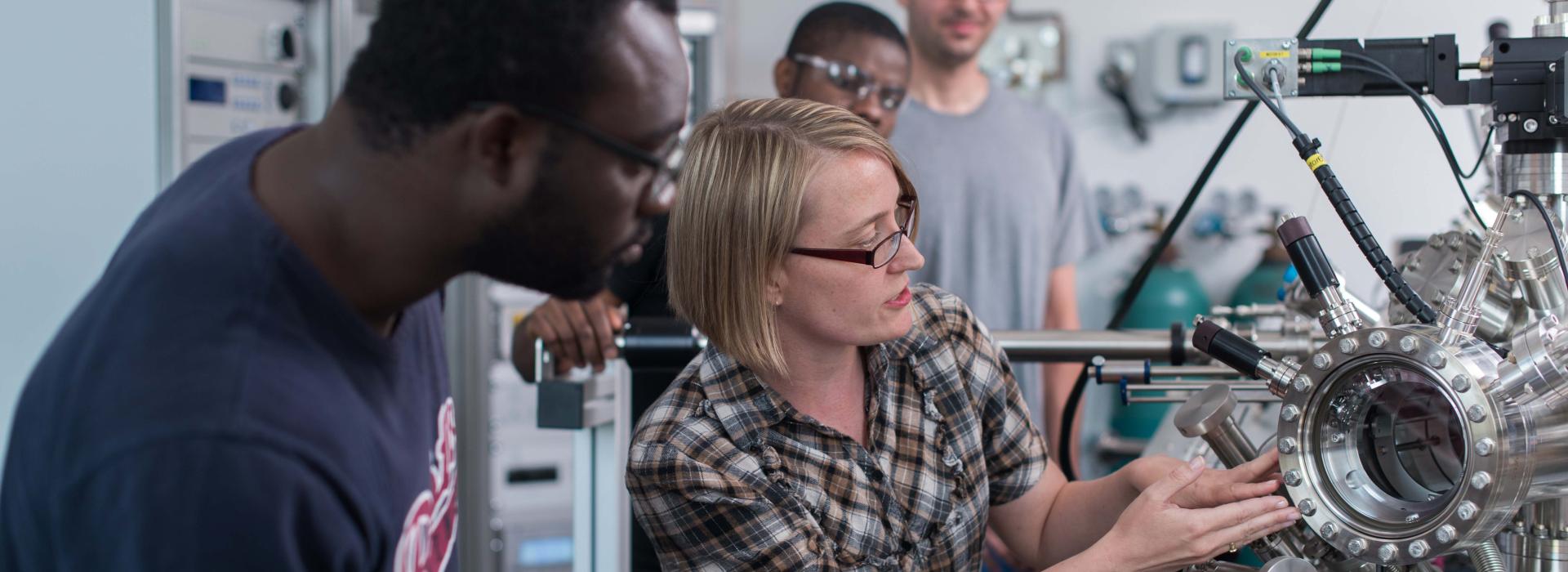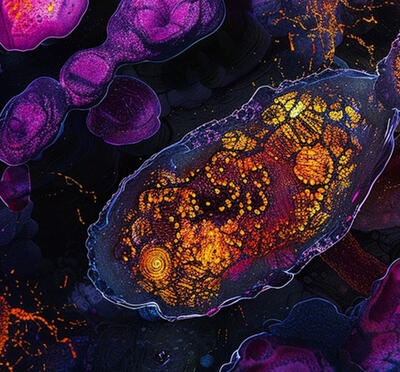With the recent acquisition of an ambient-pressure X-ray photoelectron spectroscopy system (AP-XPS), Oregon State University’s surface characterization laboratory has become a major resource for materials researchers. The instrument is the first of its kind in the United States to incorporate an ambient-pressure scanning tunneling microscope (AP-STM), which enables atomic-scale surface imaging. The acquisition integrates research capabilities in ways that are unmatched by any other institution in the country.
“Our system was custom-designed to support the broad range of research we’re doing here,” said Greg Herman, principal investigator on the grant that secured funding for the instrument. “This unique combination of capabilities will help us advance the science and technology of new materials, interfaces, and devices.”
Acquired in part through a major research instrumentation award from the National Science Foundation, the AP-XPS/STM system will serve as part of a user facility within the NSF’s National Nanotechnology Coordinated Infrastructure program. The system will be made available to researchers from other universities, national laboratories, and private industry, who will be able to book time on the instrument to perform their own studies.
X-ray photoelectron spectroscopy uses X-rays to determine the composition, chemical states, and electronic states of surfaces, interfaces, and thin-film structures. The technique is vital to the development of new and better materials for transistors, solar energy, batteries, catalysts, and various environmental applications. Combining AP-XPS and AP-STM in the same system allows researchers to measure chemical and structural changes of materials under identical conditions. The new instrument helps to position the College of Engineering as the partner of choice for industry, government, and academia.
The ambient pressure designation is a big part of what makes this system unique. Conventional XPS requires ultrahigh vacuum conditions, but this new system can operate under pressures and temperatures that more closely resemble real-world conditions. It also enables the characterization of materials in the presence of liquid water. This is especially helpful when looking at biological materials, said David Castner, joint professor of chemical engineering and bioengineering at the University of Washington.
“The native environment for biomolecules is aqueous based, so their structure, as well as the biomaterial surfaces they are immobilized to, depends on the interactions of water with these biological materials,” said Castner. “Ambient pressure XPS provides us with a new way of examining biological materials, or any system where there is a liquidsolid interface.”
The system comes with a variety of additional enhancements and upgrades. It is equipped with several photon sources, enabling researchers to look at electrons from different orbitals and examine the effects of radiation on various materials. Its ports accommodate various types of gases for ambient pressure studies. Other capabilities include a fourpocket electron beam evaporator and low-energy electron diffraction for depositing and characterizing thin-layer films on surfaces. Each of these features will support a variety of research projects in the College of Engineering and other colleges on campus.
Liney Árnadóttir, assistant professor of chemical engineering, is investigating catalytic reactions at the molecular level for energy applications. The AP-XPS system will play a key role in a new NSF-supported project in her research group, which is combining experimental and computational approaches to study the effects of solvents on catalytic reactions.
“Most of fundamental catalysis research is done in ultrahigh vacuum, while real, industrial catalysis takes place at higher pressures and often in liquids,” said Árnadóttir. “This new system will allow us to study catalytic reactions at a range of pressures and temperatures. By imaging these catalysts with atomic resolution, we can watch diffusion and reaction taking place on the surface. With the ability to precisely control the temperature of the substrates and background pressure, we can monitor changes in chemical states and reaction routes as we move from ultrahigh vacuum to nearambient pressure. This will provide unique insights into the effects of solvents in catalysis.”
Joe Baio, assistant professor of bioengineering, plans to use the new instrumentation to examine biological systems. One project involves creating biosensors by attaching a piece of microRNA to a surface that detects certain disease markers. Another will look at the surface chemistry of snakeskin to discover how its scales are able to slide over a variety of surfaces without wearing down.
“With ambient pressure XPS, we can do real in situ characterization of biological materials in the presence of water. That’s the big game changer for me,” said Baio. “We can look at how global warming is affecting the growth of oyster shells through ocean acidification. We can characterize the adhesive properties of various sticky slimes found in nature. In short, we’ll be using it for everything.”
The new system also could be used in space exploration, such as examining radiation chemistry on the planet Mercury. Or it could model conditions on Europa, one of Jupiter’s moons, which appears to contain liquid water.
“Before we got this system, we had to tailor our research to the limitations of our resources,” said Herman. “There is so much more that we can do now. The primary limitation is that of our imagination.”





